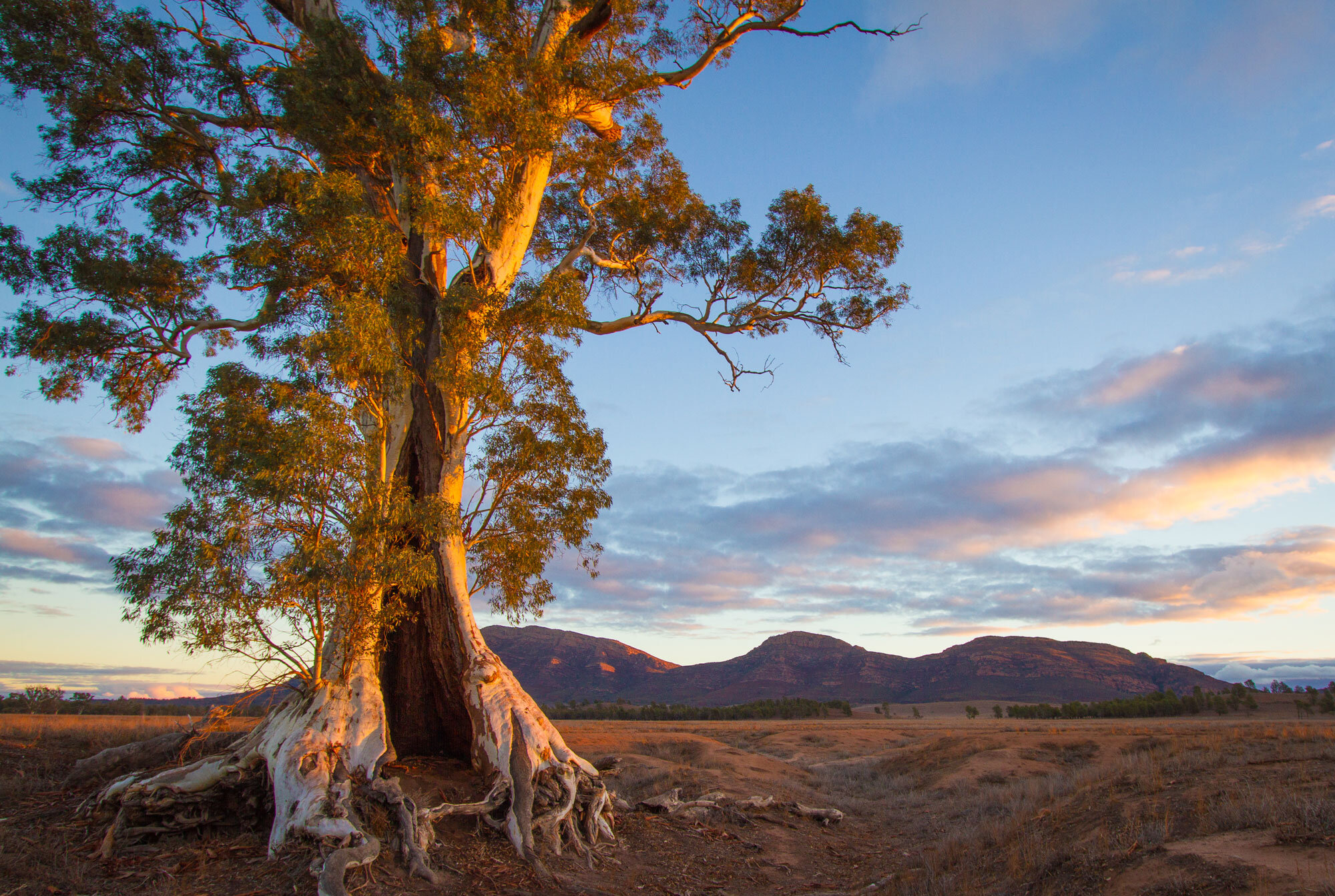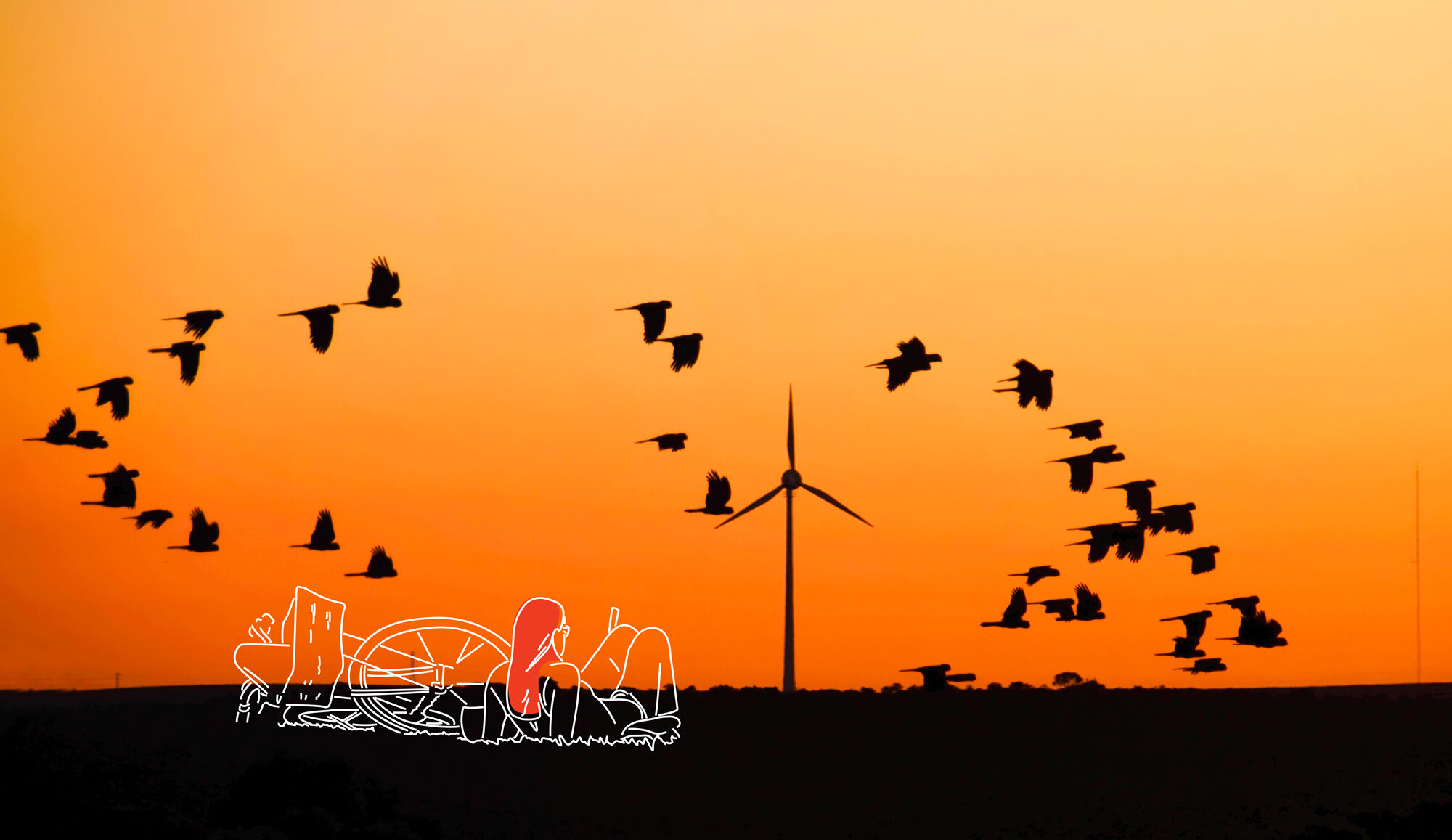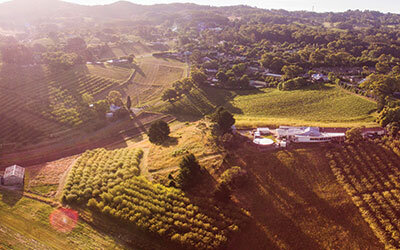
SHift 5
From a purely historical focus to future-orientated outcomes
The nature of South Australia’s landscapes is not static. The co-evolution of climate, nature and Aboriginal land management resulted in large changes over the past 60,000+ years.
Since the arrival of Europeans, abrupt and dramatic change has occurred, driven by the replacement of Aboriginal land management with European models of agriculture and pastoralism. Dramatic shifts are likely to continue in the future, driven by the direct and indirect impacts of climate change. These historic legacies have resulted in a native biota that is quite different to that seen by the first European Australians and many of us have even observed major changes in our own lifetimes.
All this means that restoring our ecosystems to a historic state will become a less viable option in the future, especially at the landscape-scale. This doesn’t mean that historic templates are not useful as a guide [4]. But we need to think deeply about what we are trying to achieve, beyond ‘what was there’, with increasing focus on conserving the things we value and can sustain, as well as on ecosystem function and processes.
There are many tools and frameworks already available to explore which landscape interventions will be most effective and no doubt these will continue to evolve. Whatever tool we use our challenge is to be more critical about the activities we invest in and the decisions we make to better account for the context within which systems sit, intervene where we can affect system drivers, garner collective action and to learn and refine over time.
Ultimately the suite of direct management actions available to us is relatively limited (e.g. area protection, revegetation, reintroductions, or to manipulate pests, weeds, fire, grazing and water regimes) but there are less conservative options emerging that deserve more consideration such as assisted migration, re-wilding, mixing provenances, bolstering genetic diversity in small populations, food supplementation, and managing non-native species as habitat. These tools will need to be trialled cautiously and with community backing but we need to start considering and testing them as warranted.
— ♢♢♢ —
[4] https://ianluntecology.com/2015/03/08/future-restoration/
Case study

Case study
Considering the whole landscape
The future of biodiversity conservation
The Paddock Tree Project is focussed on supporting the recovery of declining woodland birds in the lower-rainfall production landscapes of the northern and eastern Mount Lofty Ranges by maintaining and expanding paddock tree habitat.
Recent examination of developed areas in the Mount Lofty Ranges has revealed that some parts retain very significant values that are not conserved elsewhere. Current land use practices (such as low-input, extensive livestock production) may even be essential to the persistence of these values.
In recognition of this, the Adelaide and Mt Lofty Ranges Natural Resources Management Board has partnered with Trees For Life to deliver the Paddock Tree Project, a unique way of working directly with producers to support the retention of existing production systems and their biodiversity value. The sparse trees and their associated open pasture landscapes currently provide critical habitat for a large number of declining woodland bird species. However, the trees in these areas are typically over 200 years old and most will be gone within the next 50 years, resulting in reduced production benefits (from shade and shelter) and local wildlife extinctions.
To address this issue, the project is planting and protecting a new generation of trees. More than 250 producers have expressed interest in being involved, and over two winters, 13,500 paddock trees have been planted and 183 naturally regenerating seedlings guarded, across nearly 11,000 hectares. These plantings will help to maintain the value of these landscapes for both production and conservation into the future. The approach is very different to most current practices, which would focus on protecting and restoring the patches of vegetation, but largely ignore the wider landscape values.
Year three of the project is being rolled out in 2018, and will focus on the Northern Mount Lofty Ranges and Barossa regions. Producers with low intensity sheep grazing properties are currently being recruited and investigations are underway to establish partnerships with other organisations to continue and expand the Paddock Tree Project in future.
The issue of paddock tree decline is clearly of concern to many people and the concept of planting scattered paddock trees is being wholeheartedly embraced across the region.
The Paddock Tree Project is an innovation in Landcare practice, as a project that will achieve both biodiversity and productivity benefits without asking landholders to set aside land especially for conservation.
— ♢♢♢ —
Source: Government of SA The 30-Year Plan for Greater Adelaide 2017 Update 2017; Adelaide and Mount Lofty Natural Resources Management Board; Trees for Life.
Photo: BY CC Jacqui Barker via Wikimedia Commons
❯❯ More shifts









